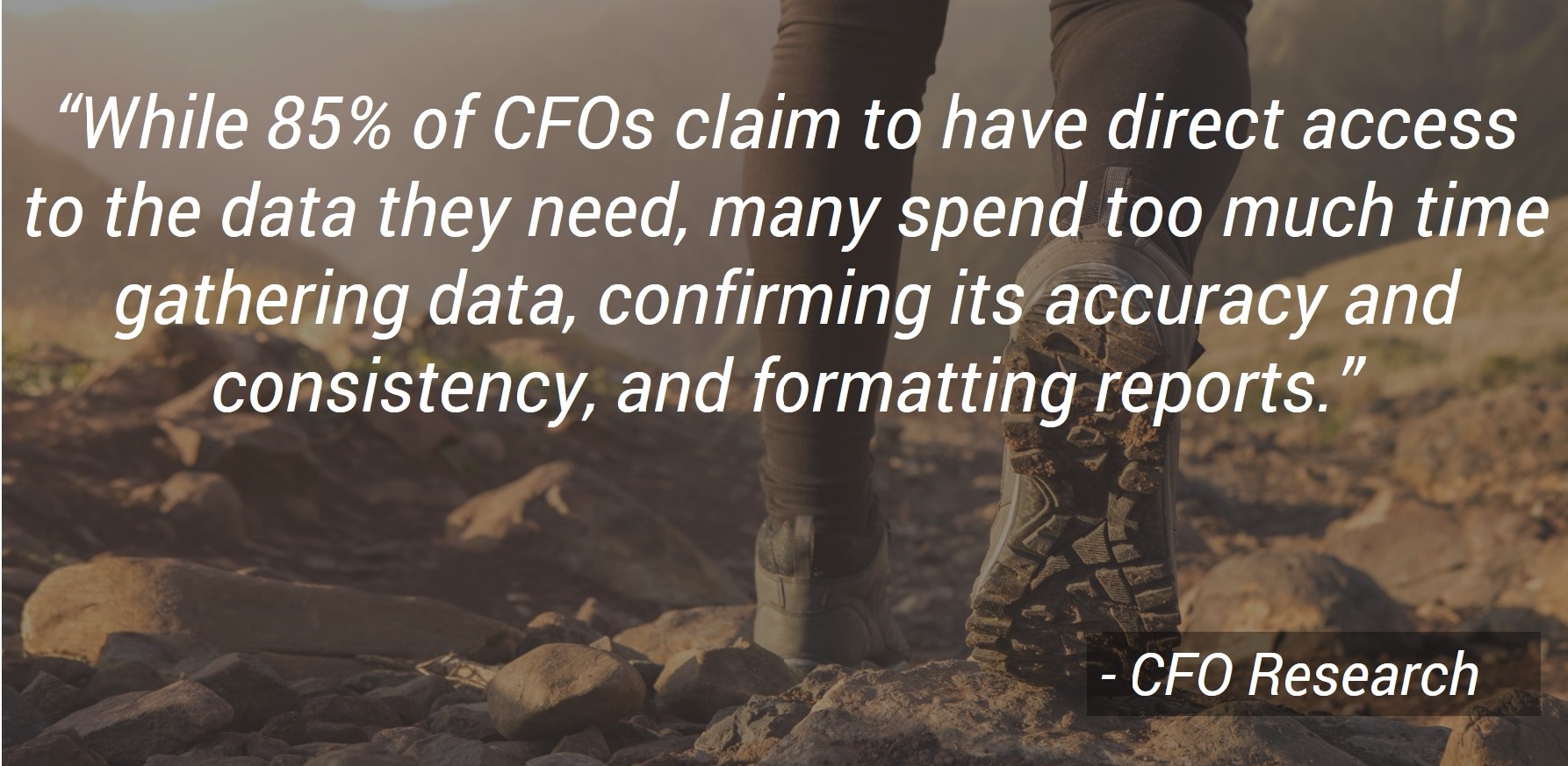Dynamic Reporting: The Quest to a Single Version of the Truth

Reports are used to “take the pulse of the business” and offer insights into the organization’s health. Having a clear perspective of the company’s key drivers is critical for businesses to remain competitive and profitable. Major efforts are underway enterprise-wide as organizations harness the power of their data to drive better, faster decision making. As these companies work to expedite the decision making process, they must first focus on achieving a single source of the truth. Without that step, there can be no confidence in the accuracy of data and in the outcome of the decision. As CFOs seek to take full advantage of the data available to their organizations – and then deliver actionable insights based on that data – they should consider a new approach to reporting.
CFO Research surveyed finance leaders on their reporting practices and found that while 85% of CFOs claim to have direct access to the data they need, they often spend too much time gathering and formatting the data so it can be easily digested by those outside of the finance department. This leaves a miniscule 15% of their time available for any valuable analysis needed to guide both strategic and tactical decisions.
Another challenge with reporting is the increase of the volume of data available for reporting, leading to an increase in reports needed to review the results. The growing number of reports also significantly increases the risk for inefficiency and inaccuracy in the reported results. The research also found that 43% of CFOs consider their reporting processes to be inefficient, and they identify the key obstacle that stands in the way of gaining actionable insights is lack of source system integration. 60% say that disparate systems continue to house operational and financial data separately, and that means their teams continue to be overwhelmed with error-prone and time-consuming process of having to manually aggregate data.
Much of the value in reporting comes from ensuring the right pieces of data are pulled together to provide clarity on the direction of the business. Continuing to rely on traditional reporting platforms will only magnify the shortcomings in the reporting process and can be that one missing piece that stands in the way of gaining insight.
An important first step to faster, more accurate reporting is to evaluate non-value-added tasks like data gathering, verification and formatting. As more and more organizations see value in tracking non-financial metrics, corporate reports naturally must include a growing amount of operational data. Using traditional reporting methods, finance must access data from other parts of the business – housed in systems outside of finance – and then manually manipulate and reconcile the data into a consolidated report.
Finance teams strive to produce corporate performance reports for multiple audiences, but it’s often a very complex process due to the number of disparate systems that contain relevant information. 54% of CFOs admitted they generate reports by exporting data out of their ERP systems and into a Microsoft office application such as Excel, Word, and Powerpoint. Of those that report an inefficient process, 64% take this approach. Alternatively, over one-fifth of CFOs generate reports directly out of their ERP systems, and 41% of that group still say they found their numbers inconsistent from report to report. Spreadsheets are identified as a key source for errors and inefficiency, while disparate ERP systems between locations is identified as a primary cause of problems in reporting.
The lack of centralized reporting system introduces inconsistencies in metrics, data, and calculations, subsequently leading to inconsistencies in reports. To confirm the accuracy of their reports, finance teams must spend an excessive amount of time verifying and validating data. This process limits the ability to easily conduct variance and comparative reporting, which is a critical step that can help determine what areas require a possible course correction.
By automating report generation and working from a single source of the truth, finance can deliver the quality and timely reports. CFOs who can streamline this process for their teams can instill a greater level of trust in the data, while enabling the finance team to reveal insights during the reporting process.
To truly deliver actionable insights among non-financial managers, CFOs will also need to institute processes that ensure multiple, fast visual views of a growing amount of both finance and operational data. Working from a single version of the truth could be the missing piece to gaining advanced insight into the direction of your business.
Fully-Verfied offers a host of reporting and data visualization options to view and share model data that eliminates manual data gathering. Ad hoc charts and graphs and available at every level of detail and standard reporting tools are integrated to build formal reports. The Microsoft Excel® Add-in makes it easy to export and import model data and built-in dashboard designer gives you the tools to expose top-line results with drill-down capabilities for more detailed root cause analysis.
Our platform provides businesses with a single source of the truth by integrating with existing systems – ERP, Finance, Operations, Business Intelligence, Data Warehouses and others – ImpactECS models handle all of your cost and profitability analytics and planning processes in a single environment and promotes collaboration.
Click Here to learn more about how ImpactECS allows business leaders and to understand the story their data is telling them with one version of the truth that doesn’t keep them guessing.